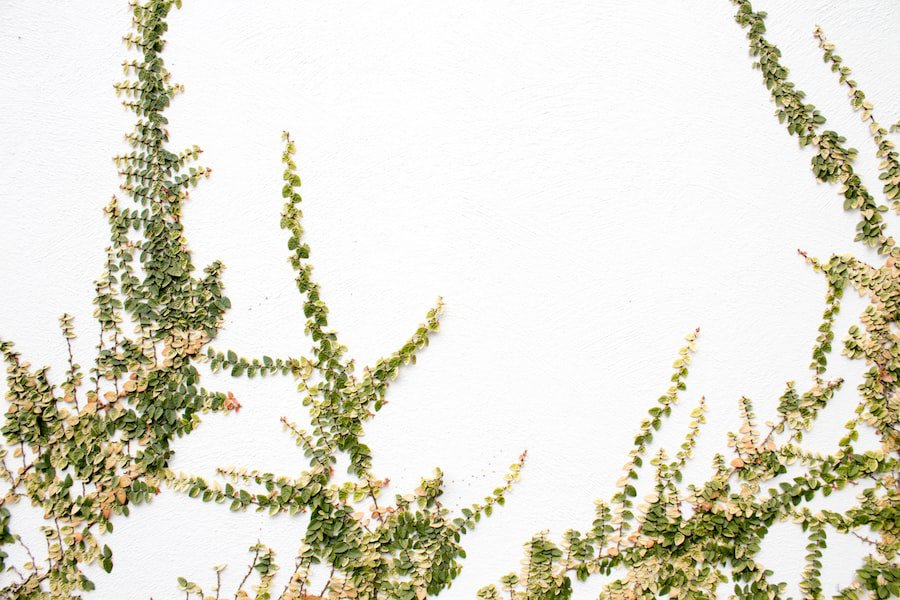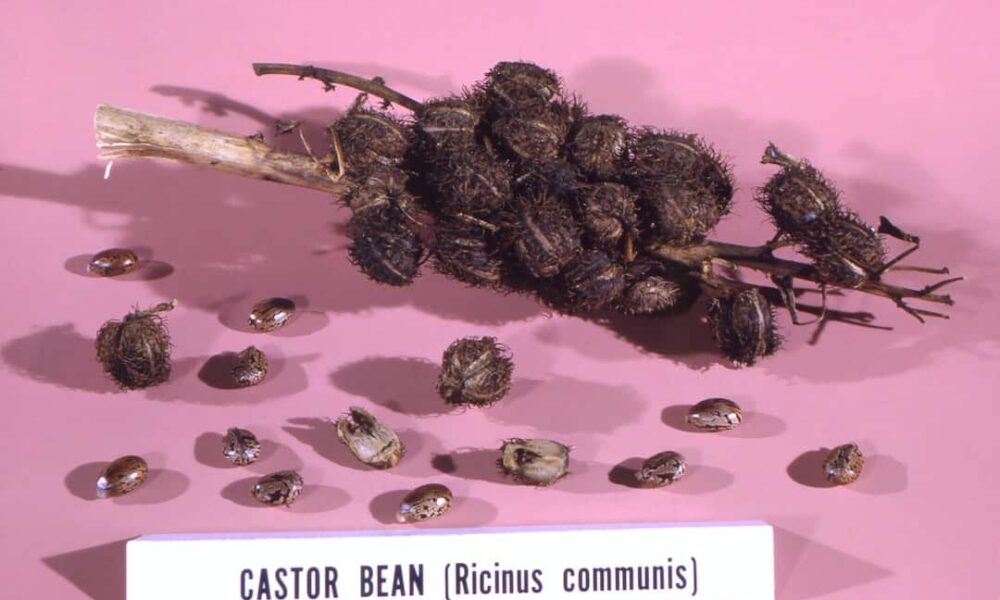Poison oak is a common plant found in North America that can…
Surviving Poison Ivy: Tips and Tricks for Avoiding and Treating the Itchy Rash

Poison ivy is a common plant found in many parts of the world, known for its ability to cause an itchy and irritating rash on the skin. The plant contains an oil called urushiol, which is responsible for the allergic reaction that occurs when it comes into contact with the skin. This article will provide a comprehensive guide to understanding poison ivy, including how it affects the skin, how to identify and avoid it, and what to do if you come into contact with it.
Understanding Poison Ivy and How it Affects Your Skin
Poison ivy contains a toxic oil called urushiol, which is found in all parts of the plant, including the leaves, stems, and roots. When urushiol comes into contact with the skin, it can cause an allergic reaction known as contact dermatitis. This reaction typically occurs within 12 to 48 hours after exposure and can last for several weeks.
The symptoms of poison ivy rash can vary from person to person but commonly include redness, itching, swelling, and blisters. The severity of the reaction depends on factors such as the amount of urushiol that comes into contact with the skin and an individual’s sensitivity to the oil. Some people may only experience mild symptoms, while others may have a more severe reaction.
Identifying Poison Ivy: What to Look For
Identifying poison ivy is crucial for avoiding contact with the plant. Poison ivy typically has three leaflets per stem, with each leaflet having a pointed tip. The leaves are usually shiny and can range in color from green to red in the fall. The plant can grow as a vine or a shrub and is commonly found in wooded areas, along trails, and in open fields.
It’s important to note that poison ivy can sometimes be confused with other plants that have similar appearances. One common look-alike is poison oak, which has similar leaves but grows as a shrub rather than a vine. Another plant to be aware of is poison sumac, which has clusters of leaves that are arranged in pairs. It’s essential to familiarize yourself with the distinct characteristics of poison ivy to avoid any potential confusion.
Avoiding Poison Ivy: Tips for Staying Safe Outdoors
The best way to avoid the discomfort of a poison ivy rash is to prevent contact with the plant altogether. When venturing outdoors, it’s important to stay on designated trails and avoid areas where poison ivy is known to grow. Wearing long sleeves, long pants, and closed-toe shoes can provide an additional layer of protection against the plant’s oil.
If you have poison ivy growing in your yard, it’s crucial to take steps to remove it safely. It’s recommended to wear protective clothing, such as gloves and long sleeves, when handling the plant. Using a herbicide specifically designed for poison ivy can help eliminate the plant from your yard effectively. It’s important to follow the instructions on the herbicide carefully and avoid spraying it on other plants or surfaces.
Clothing and Gear: Choosing the Right Protection
When spending time in areas where poison ivy may be present, it’s essential to choose the right clothing and gear to protect yourself from contact with the plant’s oil. Opt for long-sleeved shirts, long pants, and closed-toe shoes made from tightly woven fabrics that can act as a barrier against urushiol.
Additionally, consider wearing gloves and socks to provide extra protection for your hands and feet. It’s also advisable to wear a hat and sunglasses to shield your face and eyes from any potential contact with the plant.
After spending time in areas with poison ivy, it’s crucial to properly clean and care for your clothing and gear. Wash your clothes in hot water with detergent to remove any traces of urushiol. It’s also recommended to clean your gear, such as hiking boots or gardening tools, with soap and water to ensure that no oil remains.
Cleaning Up After Exposure: Steps to Take Immediately

If you come into contact with poison ivy, it’s important to take immediate steps to minimize the spread of urushiol and reduce the severity of the allergic reaction. The first step is to wash the affected area with soap and water as soon as possible. This will help remove any remaining oil on the skin and prevent it from spreading to other parts of the body.
It’s also crucial to wash any clothing or gear that may have come into contact with poison ivy. Use hot water and detergent to thoroughly clean these items and prevent further exposure.
To prevent the spread of urushiol to other parts of the body, avoid scratching or touching the affected area. It’s also advisable to trim your nails short to minimize the risk of transferring the oil from your hands to other areas of the skin.
Over-the-Counter Remedies: Which Ones Work Best?
There are several over-the-counter remedies available for treating poison ivy rash. These products typically contain ingredients such as calamine lotion, hydrocortisone cream, or antihistamines, which can help relieve itching and reduce inflammation.
Calamine lotion is a popular choice for soothing poison ivy rash. It works by drying out the blisters and reducing itching. Hydrocortisone cream can also be effective in reducing inflammation and relieving itching. Antihistamines, whether taken orally or applied topically, can help alleviate itching and discomfort.
It’s important to note that while over-the-counter remedies can provide relief, they may not cure the rash entirely. If symptoms persist or worsen after using these products, it’s advisable to seek medical attention.
Home Remedies for Poison Ivy Relief
In addition to over-the-counter remedies, there are several natural home remedies that can help soothe poison ivy rash. One popular option is taking an oatmeal bath, which can help relieve itching and inflammation. Adding colloidal oatmeal to a warm bath and soaking for 15-20 minutes can provide relief.
Aloe vera gel is another natural remedy that can help soothe the skin and reduce inflammation. Applying a thin layer of aloe vera gel to the affected area can provide cooling relief and promote healing.
It’s important to note that while home remedies can provide temporary relief, they may not be as effective as over-the-counter or prescription medications. If symptoms persist or worsen, it’s advisable to seek medical attention.
When to Seek Medical Attention: Signs and Symptoms to Watch For
While most cases of poison ivy rash can be treated at home, there are certain signs and symptoms that may indicate the need for medical attention. If you experience severe symptoms such as difficulty breathing, swelling of the face or throat, or a widespread rash that covers a large area of the body, it’s crucial to seek immediate medical attention.
Additionally, if the rash does not improve after a few weeks or becomes infected, it’s advisable to consult a healthcare professional. They can provide appropriate treatment and help prevent any complications.
During a medical evaluation for poison ivy rash, a healthcare professional may prescribe stronger medications such as oral corticosteroids or topical creams to alleviate symptoms and promote healing.
Prevention: How to Reduce Your Risk of Poison Ivy Exposure
Preventing contact with poison ivy is the best way to avoid the discomfort of a rash. There are several steps you can take to reduce your risk of exposure.
Firstly, it’s important to use barrier creams or lotions that contain bentoquatam before venturing into areas where poison ivy may be present. These products create a protective barrier on the skin, preventing urushiol from coming into contact with it.
Regularly washing your skin and clothing can also help reduce the risk of exposure. Use soap and water to wash your skin thoroughly after spending time outdoors, paying close attention to areas that may have come into contact with poison ivy. It’s also advisable to wash your clothes in hot water with detergent to remove any traces of urushiol.
If you have poison ivy growing in your yard, it’s crucial to take steps to remove it effectively. Wear protective clothing and gloves when handling the plant and use a herbicide specifically designed for poison ivy. It’s important to follow the instructions on the herbicide carefully and avoid spraying it on other plants or surfaces.
Living with Poison Ivy: Long-Term Strategies for Avoiding Future Outbreaks
If you’ve had a previous outbreak of poison ivy rash, there are several long-term strategies you can implement to reduce the risk of future outbreaks.
Keeping your skin moisturized can help prevent the penetration of urushiol into the skin. Applying a moisturizer regularly can create a barrier on the skin, reducing the risk of contact with the plant’s oil.
Avoid scratching or picking at the rash, as this can lead to further irritation and potential infection. Instead, try using cold compresses or taking cool showers to alleviate itching.
It’s also important to be vigilant when spending time outdoors and to take precautions to avoid contact with poison ivy. Familiarize yourself with the plant’s appearance and be mindful of its common locations. By staying informed and taking necessary precautions, you can significantly reduce your risk of future outbreaks.
Poison ivy can cause an uncomfortable and irritating rash, but with proper knowledge and precautions, it is possible to minimize the risk of exposure and effectively treat any outbreaks that do occur. By understanding how poison ivy affects the skin, identifying and avoiding the plant, and taking appropriate steps to clean and care for the skin and clothing after exposure, you can stay safe and enjoy the outdoors without the worry of a poison ivy rash.
FAQs
What is poison ivy?
Poison ivy is a plant that contains a toxic oil called urushiol. This oil can cause an allergic reaction in most people who come into contact with it.
What does poison ivy look like?
Poison ivy can grow as a vine or a shrub and has three shiny green leaves that are pointed at the tips. The leaves may have a reddish tint in the spring and fall.
How does poison ivy cause a reaction?
When urushiol comes into contact with the skin, it can cause an allergic reaction. The reaction may include redness, itching, swelling, and blisters.
Can poison ivy be spread from person to person?
Urushiol can be spread from person to person if it is still on the skin or clothing. It can also be spread by touching objects that have come into contact with the oil, such as gardening tools or pet fur.
How can I prevent getting poison ivy?
Wearing long sleeves and pants, gloves, and closed-toe shoes can help prevent contact with poison ivy. It is also important to wash any exposed skin and clothing as soon as possible after being in an area with poison ivy.
What should I do if I come into contact with poison ivy?
If you come into contact with poison ivy, wash the affected area with soap and water as soon as possible. Over-the-counter creams and ointments can help relieve itching and swelling. If the reaction is severe, seek medical attention.




This Post Has 0 Comments